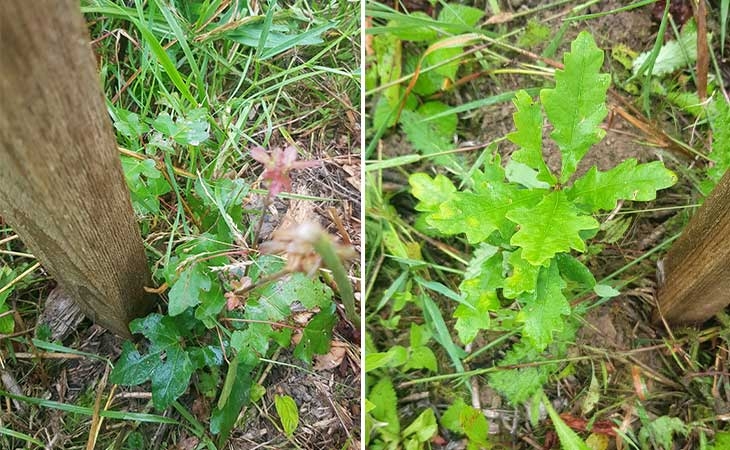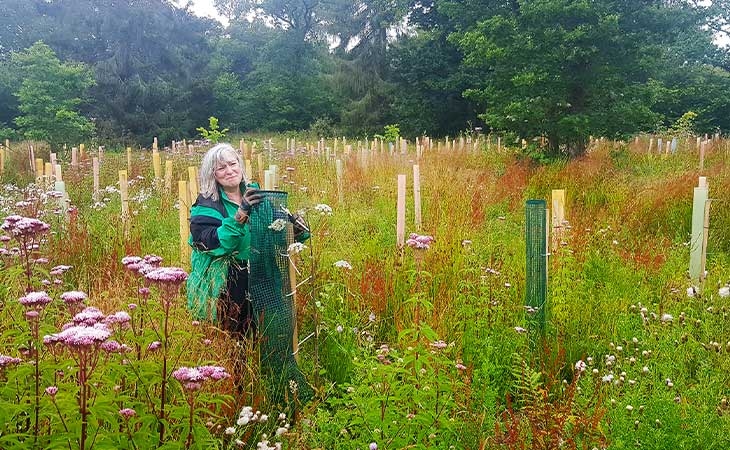A Natural Volunteer
She’s a fantastic asset, who’s helped plant over 30 trees (that we know of) – and we haven’t even had to pay for her time. No, we’re not talking about the equally wonderful volunteer Sarah (pictured), we mean Mother Nature herself.
Throughout the project planting area, whilst taking care of last season’s trees, we’ve been coming across the occasional sapling with no stake or tube around it. They tend to be amongst the thickest thistles and bramble, protected from the nibbling deer and rabbits by a ring of thorns and spikes, shooting up quickly to reach the light above.

They’ve sprung from acorns, nuts and seeds potentially buried by jay’s storing them for winter, transported in the dung of animals, or simply fallen from the nearby mature trees left standing after the ash felling.
This is known as Natural Regeneration and is one way to restore an area back to forest as naturally as possible. It can be potentially cheaper and, in some ways, easier, plus the trees that remain can be healthier and more naturally resilient due to being adapted to the soils and local environment. In fact – Forestry England are beginning to use Natural Regeneration techniques in many of their future forest planning or restocking schemes.
However, there are drawbacks - it does take a long time, and you’re not sure what species you’ll get or where. Also, access to maintain any trees is tough unless you cut back the bramble or wait until the canopy closes and these vigorous plants are shaded out.

Throughout the project area, every time we come across one of these naturally grown trees, we’ve been staking, protecting and recording what species we’ve found – and that was the theme of July’s volunteer work party morning. Thus far, we’ve found 27 oaks, 3 hawthorns, a lime, field maple and hazel – not enough to make a large dent in the 9,000-tree target, but every little definitely helps!
So, here’s another big thank you to our longest serving and most dedicated volunteer (Sarah – you’re a close second ????).
